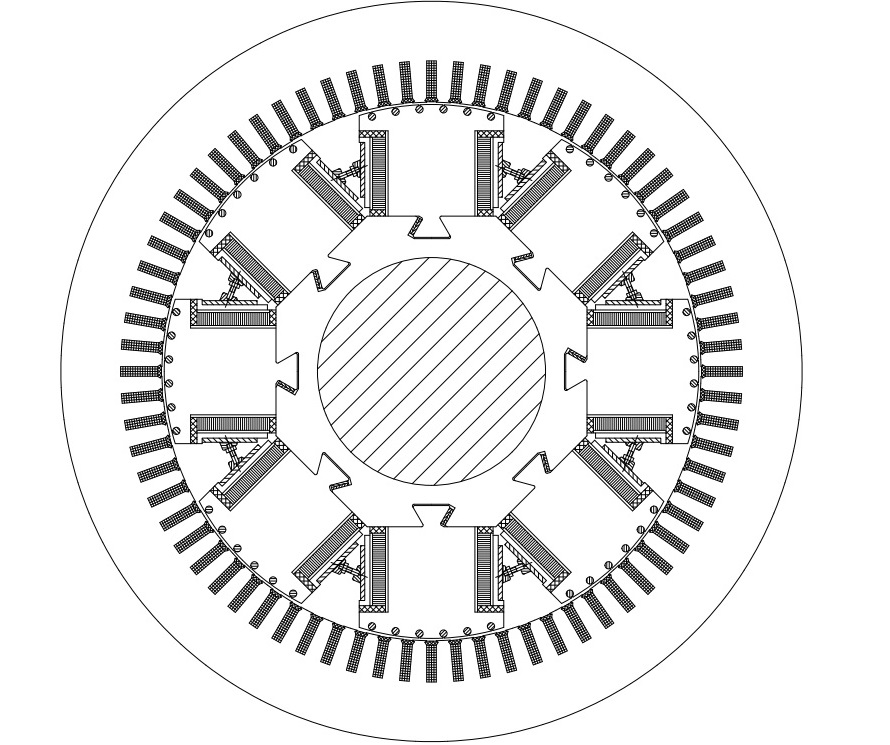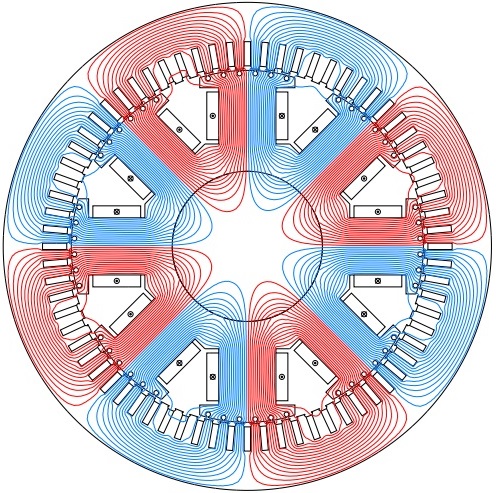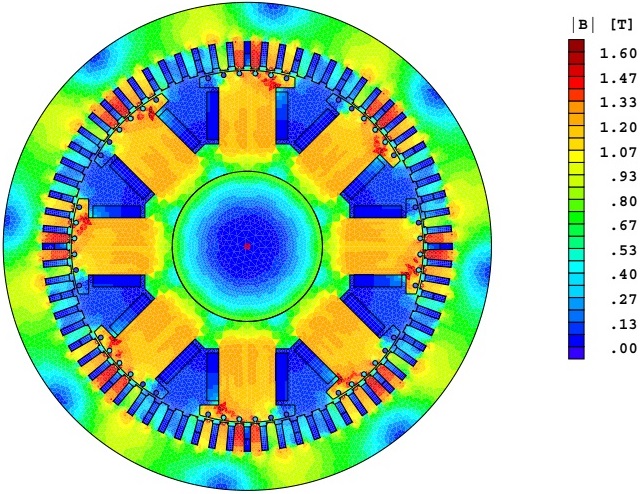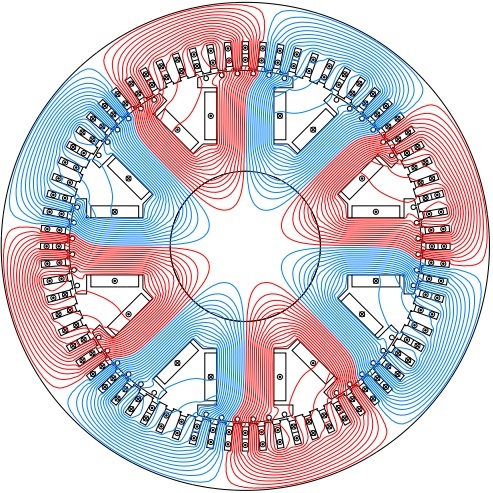Design of synchronous machines

We have developed design software for synchronous silent-pole generators and motors.
Click on any of the sections below to expand its content.
Input data for our design process- Number of phases
- Nominal active power
- Nominal line voltage
- Frequency
- Synchronous rotation speed
- Overload capability (a ratio between the maximum torque to the nominal torque)
- Efficiency
- Power factor
- International protection
- automatic determination of optimal dimensions of a generator, namely: an internal stator diameter, an external stator diameter, an air-gap value, a stator length, dimensions of the stator slots, dimensions of the poles and yoke stator;
- automatic determination of the optimal number of stator slots, the optimal number of turns in the stator winding, section of the wire of the stator winding, a scheme of the stator winding, and selection of appropriate insulation of the stator winding;
- automatic calculation of the magnetic circuit of the generator, calculate excitation current at a no-load mode and at the nominal load;
- automatic design of the excitation winding;
- automatic definition of parameters of the stator winding and excitation winding for а steady mode and for a transient mode, definition of time constants for the generator windings, and calculation of power factor in the nominal mode;
- automatic calculation of performance
characteristics of the generator, namely: load-angle characteristic, regulation characteristic, external characteristic, v-curve characteristic; - automatic calculation losses and efficiency of the generator;
- automatic design of the damping winding;
- automatic design the cooling system of the generator;
- automatic thermal analysis of the generator.
We are capable of designing silent-pole synchronous generators in a power range from 2kW up to 10MW and for the line voltage from 400V up to 10500V.
We validate our designs of synchronous machines in finite elements. The purpose of this step is to confirm performance characteristics of the proposed design to the customer.
Below you will find a few simulation results for an 8-pole synchronous machine we designed.




We can design the overall structure of a silent-pole synchronous generator provided with a set of drawings. Furthermore, we can develop drawings of main components of the generator.
We can estimate mechanical loads on the components of a generator, e.g. on the shaft, on the bearings, on the stator winding, and on the housing during short-circuit.
